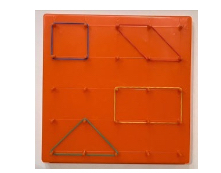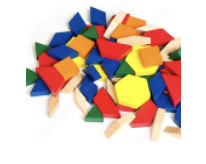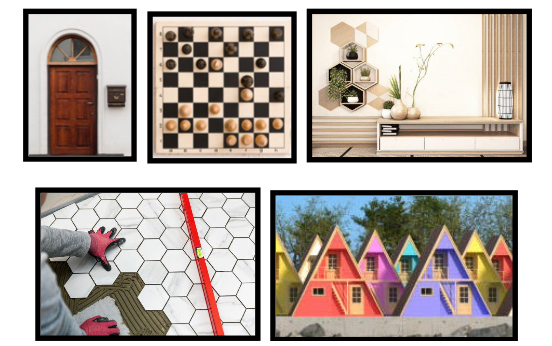General Information
Benchmark Instructional Guide
Connecting Benchmarks/Horizontal Alignment
- There are no direct connections outside of this standard, however teachers are encouraged to find possible indirect connections.
Terms from the K-12 Glossary
- Triangle
- Rectangle
- Square
- Hexagon
Vertical Alignment
Previous Benchmarks
Next Benchmarks
Purpose and Instructional Strategies
The purpose of this benchmark is to allow students to use their understanding of the various attributes to sketch a two-dimensional figure. In Kindergarten, students identified, compared and found real world two-dimensional figures of circles, triangles and rectangles regardless of their size or orientation; however, they did not formally sketch the figures (MTR.5.1).- Instruction includes guiding students to use defining attributes such as number of sides, number of vertices and side lengths to draw two-dimensional figures. Students are not expected to use a ruler or straight edge to draw a more precise figure until Grade 2 (MTR.5.1).
- Instruction includes the use of graph paper, grid paper or dot paper to assist students with drawing figures.
- Instruction includes the use of both formal and informal language.
Common Misconceptions or Errors
- Students may get confused when asked to draw a two-dimensional figure that has four sides and four vertices. With only those attributes given, students could draw a square or a rectangle as either is acceptable given those attributes.
Strategies to Support Tiered Instruction
- Teacher may refer to the benchmark MA.1.GR.1.1 Strategy to Support Tiered Instruction activity “Collect and Display”. If “Collect and Display” has been started, encourage students to refer to the chart as needed for language support during the following activities.
- Teacher provides opportunities to build shapes on a geoboard by calling out an attribute and asking students to create a shape on a geoboard that have said attribute. Students then draw the representation in the math journal or on geoboard paper. Encourage students to refer to the “Collect and Display” poster from previous activities to help them make connections to formal content vocabulary.

- Teacher provides pattern blocks and asks students to find the shape with specific attributes (such as 3 sides and 3 vertices). The students choose from the group of pattern blocks the shape that matches the attributes. The students can then trace the correct shape in the math journal.

Instructional Tasks
Instructional Task 1 (MTR.7.1)
Place the pictures of triangles, rectangles, squares and hexagons from below around your classroom to ensure students have additional items to choose from, students may recognize other objects in the classroom as well. Some photos contain multiple figures that students could use for their sketches.- Part A. Look around your classroom for items that have the same attribute as listed. Sketch the items and label what you found.
- Part B. Compare with a partner and explain how you know your items have those attributes. Discuss what you notice about the sketches for items that have three vertices and the sketches that have three sides.


Instructional Items
Instructional Item 1
Draw a figure with six sides and six vertices. What figure did you draw?
Instructional Item 2
Draw a triangle, how do you know it is a triangle?
*The strategies, tasks and items included in the B1G-M are examples and should not be considered comprehensive.
